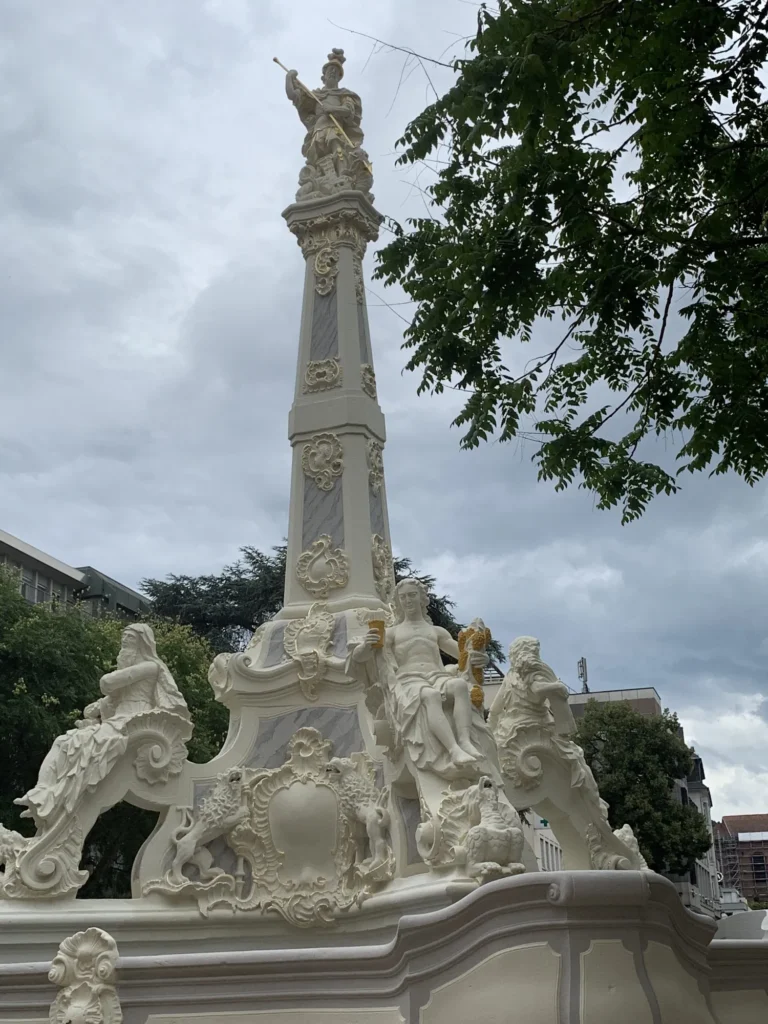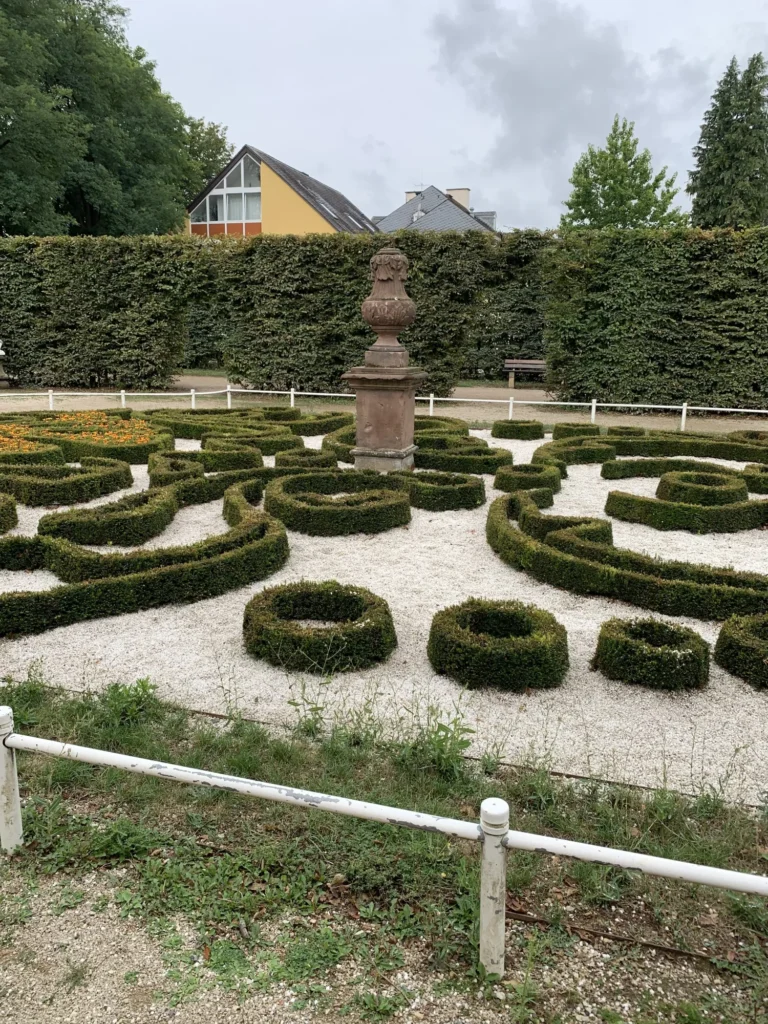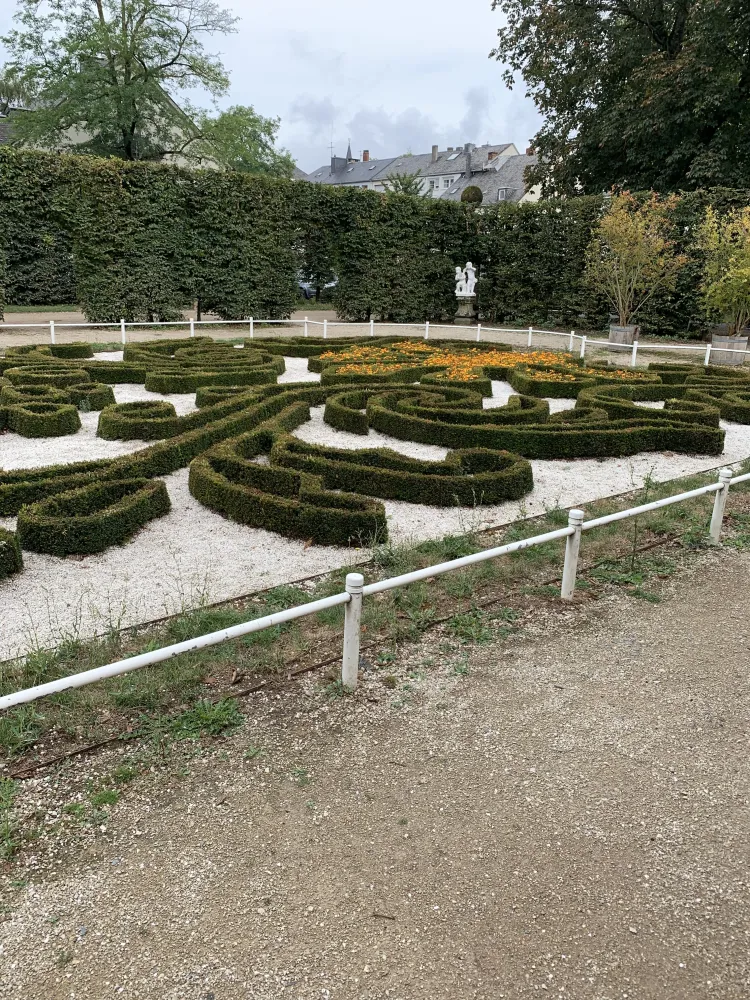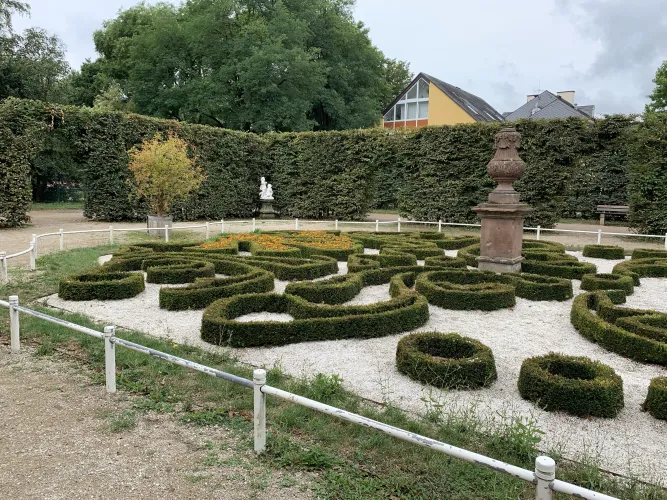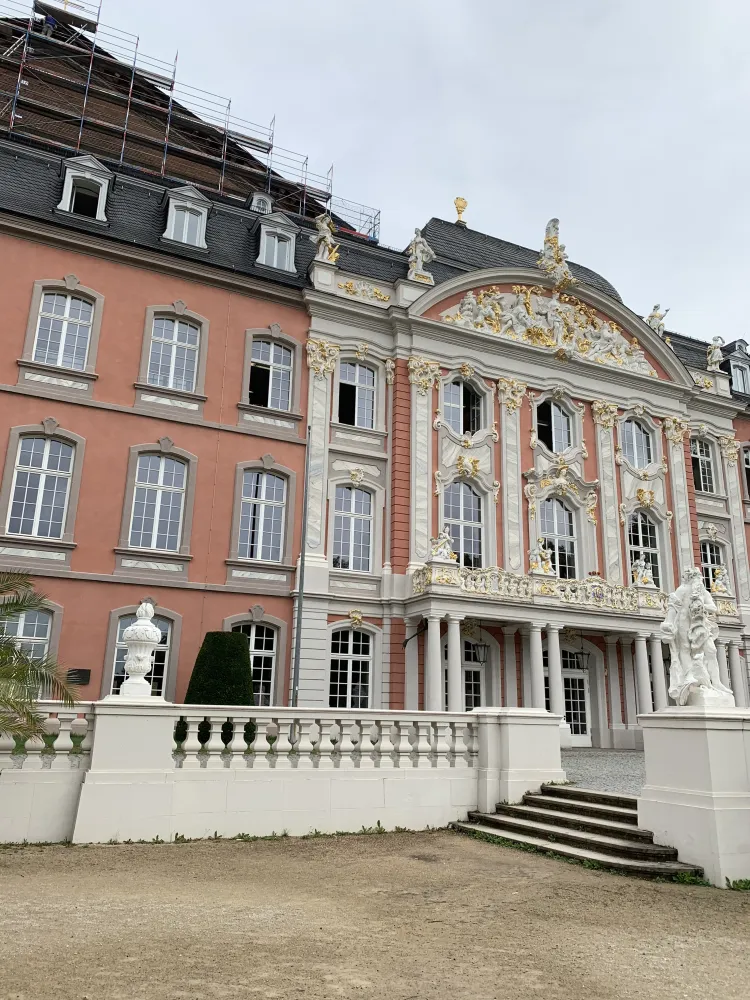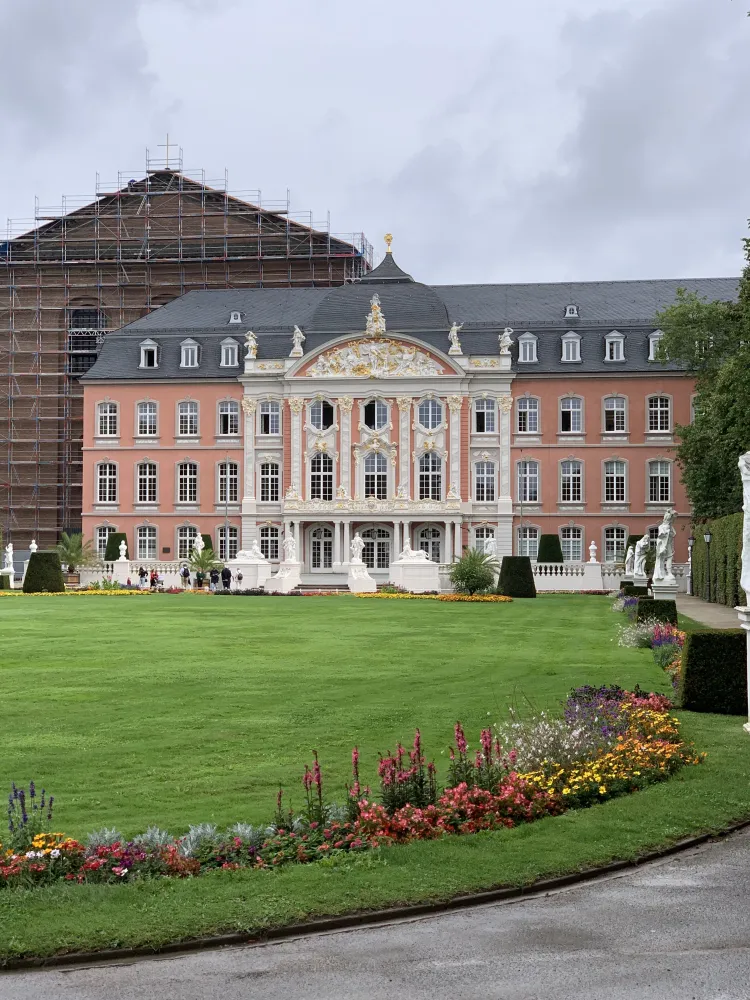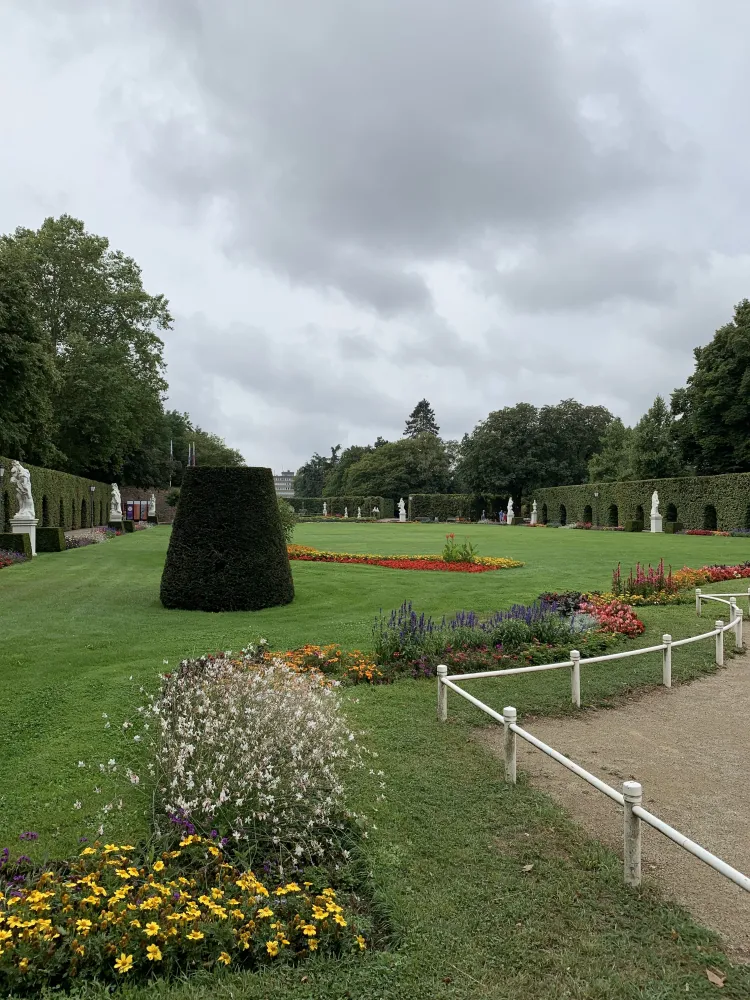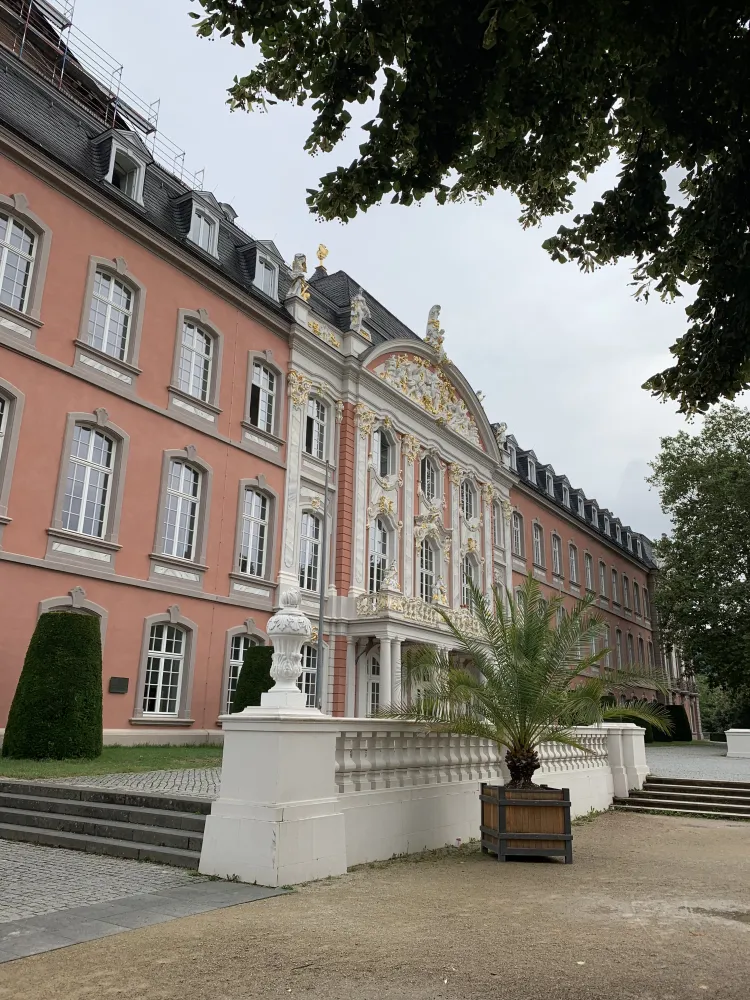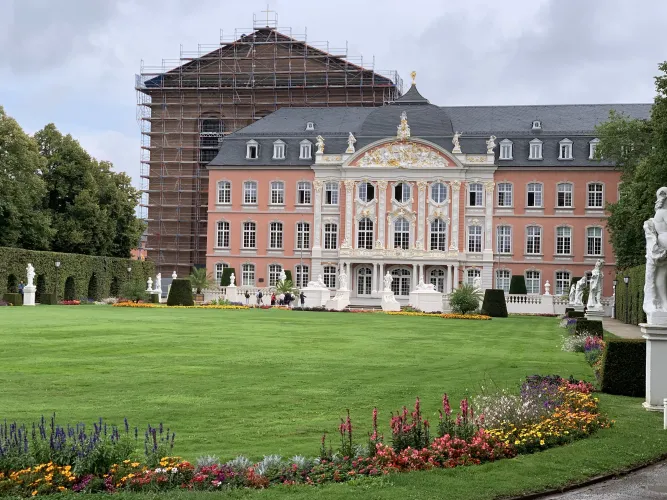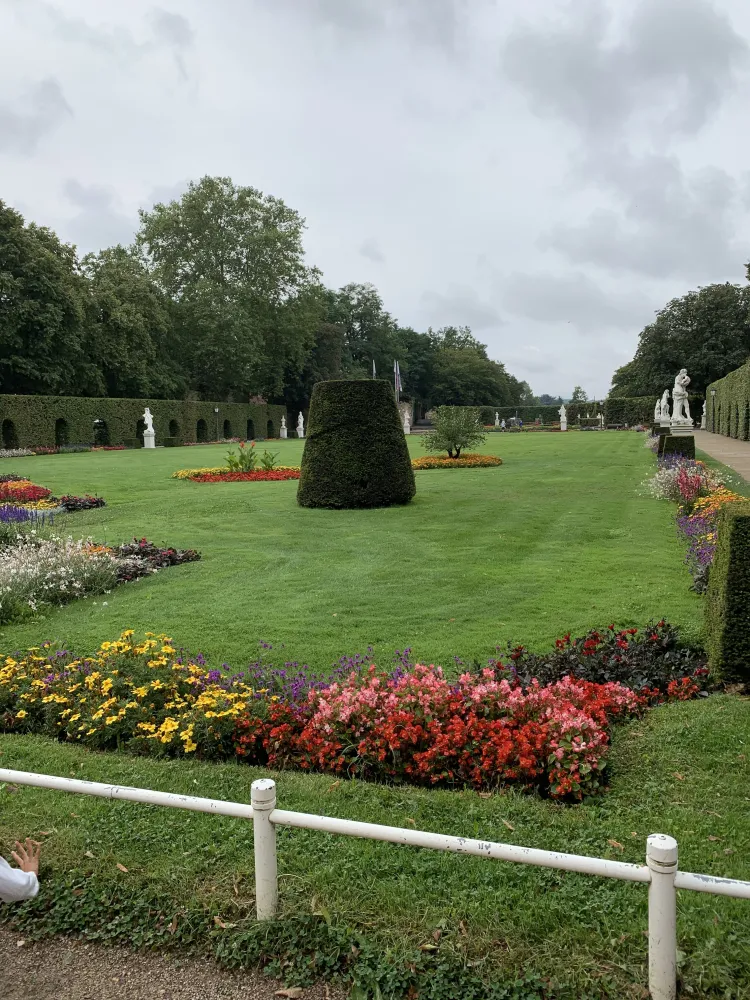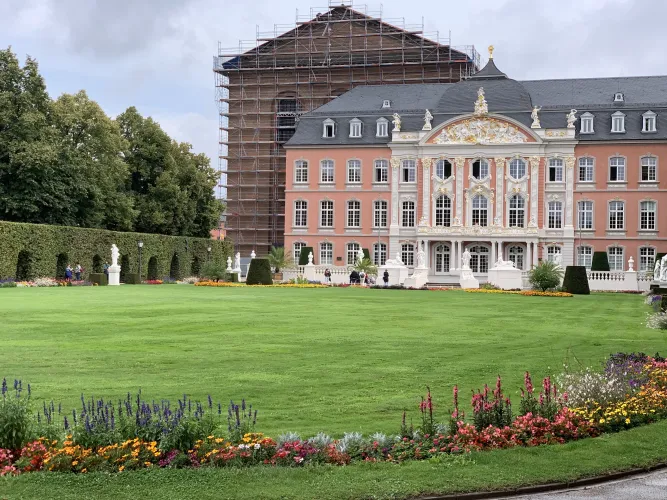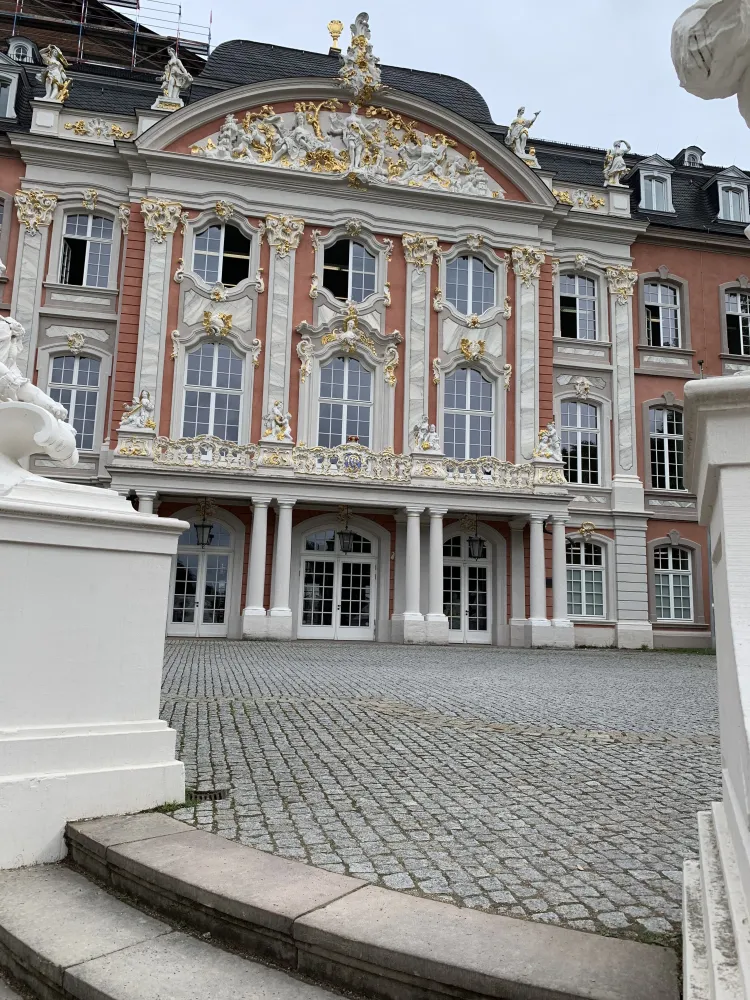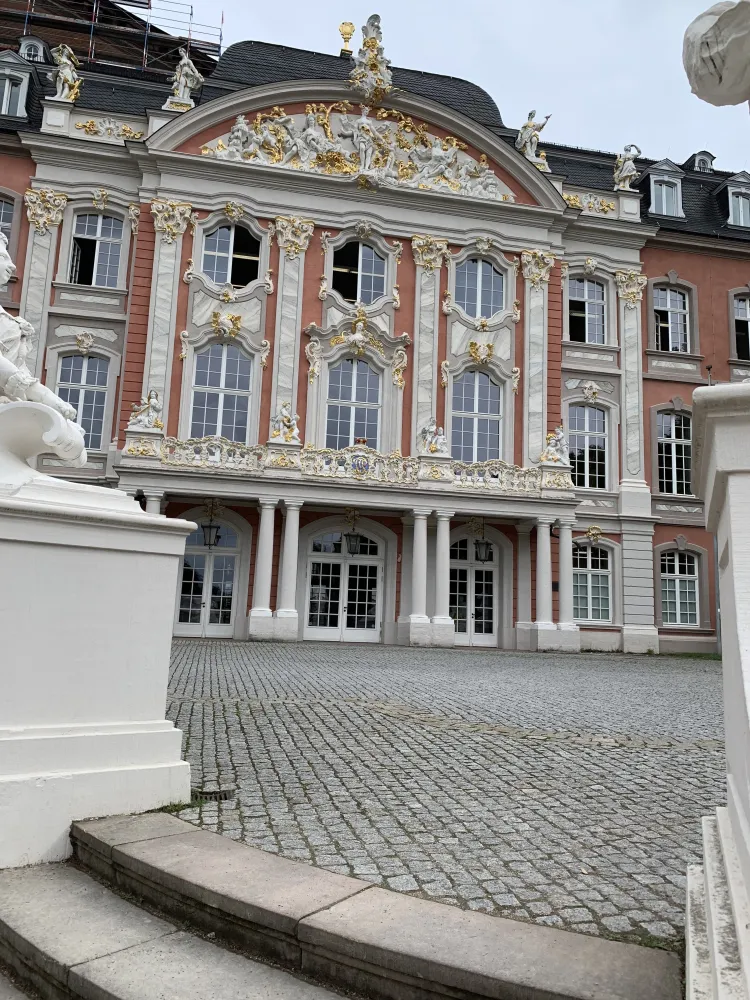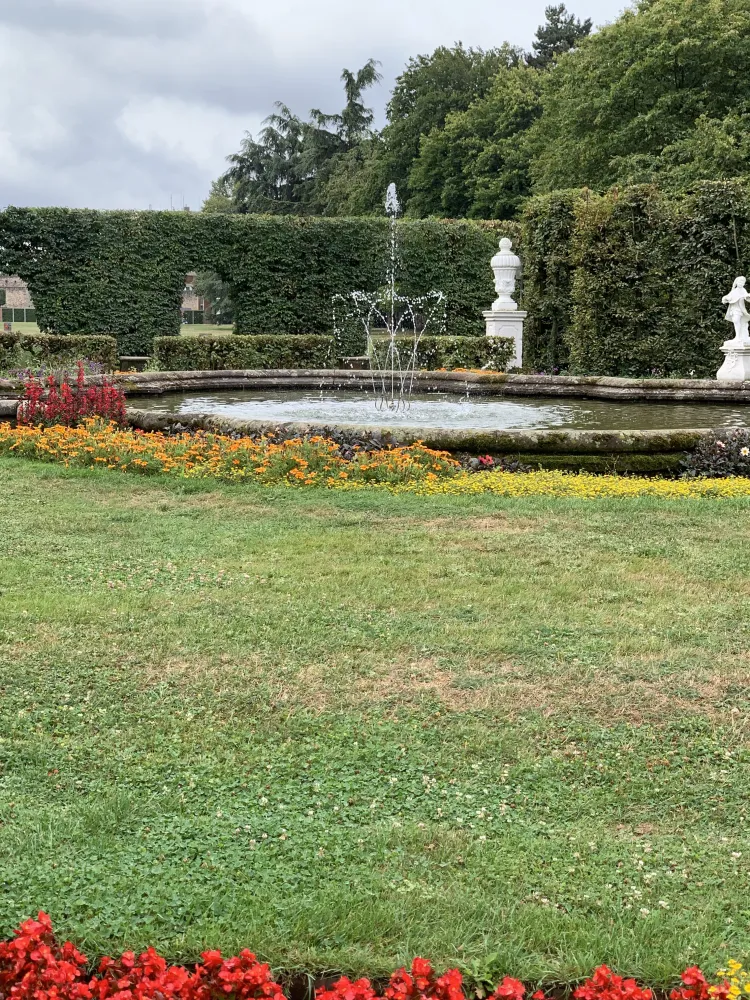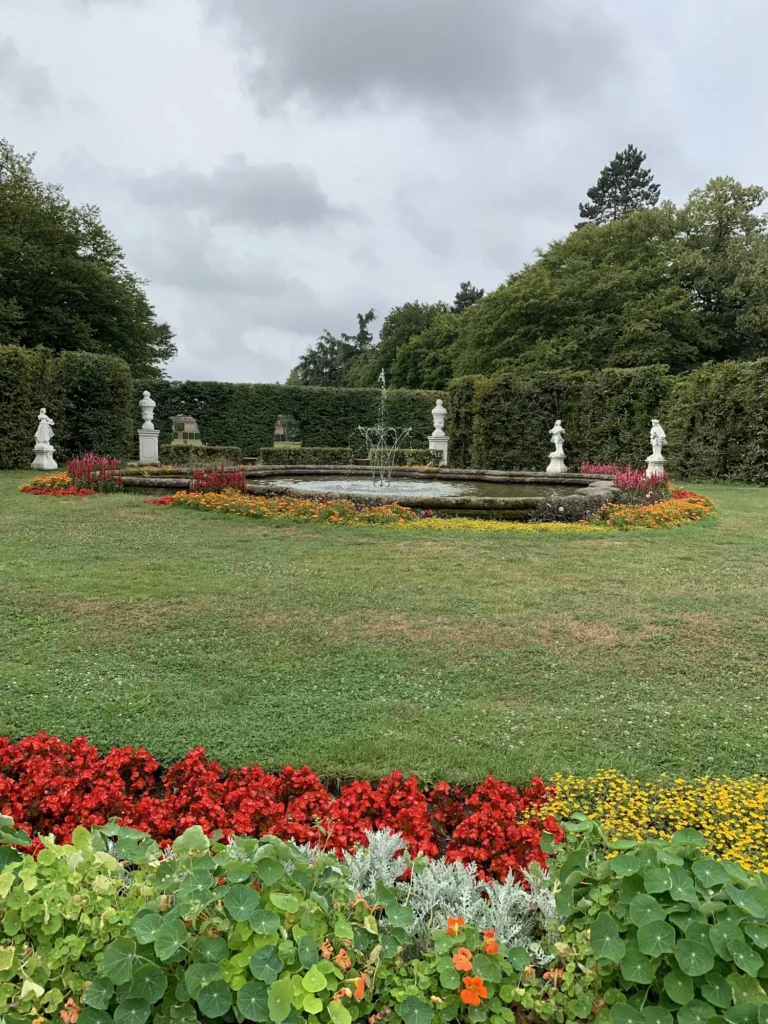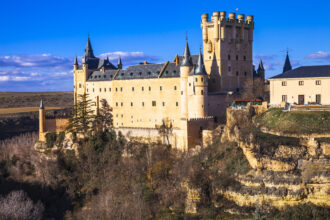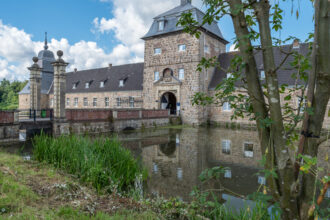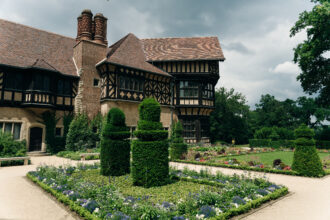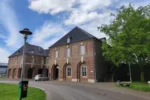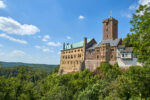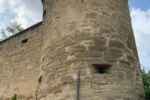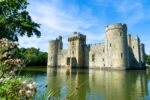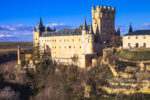The Baroque palace gardens are located in the heart of Trier. These beautiful gardens in the garden wing of the Electoral Palace were built between 1757 and 1761 and are considered a charming example of Rococo architecture. My way to the Imperial Baths took me past this garden and the Electoral Palace. The Electoral Palace is one of the most beautiful Rococo palaces in the world. Elector Johann Phillipp von Walderdorff had the palace built by his court architect Johannes Seiz. The adjacent palace garden remained unfinished in the 18th century. Since the beginning of the 19th century, the area has served as a parade ground. Between 1945 and 1947, the gardens were redesigned and decorated with casts of Baroque sculptures and a beautiful fountain from the workshop of Ferdinand Tietz. On its eastern side, the palace garden is bordered by the medieval wall with the city gate, Kastillport. I strolled through these dreamlike gardens with their beautiful water features and hornbeam walls, which were created according to a historical plan. With their play of light and shadow, they enliven the Baroque part of the garden, dividing and delimiting the space. The city of Trier owes this wonderful park to the financial support of Peter Franz Weißebach, whose relief is immortalized on the old city wall of Trier with the inscription: “Franz Weissebach, the mischievous founder of this public garden, as a sign of gratitude from the city of Trier.” He was mischievous for this reason, because the private individual and co-owner of the Kanzemer Berg winery wanted to play a trick on his hometown after his death. He bequeathed his fortune to the city of Trier in his will, but with the stipulation that this money must be used to build a crematorium. If this request was rejected five times by the city council, his inheritance could be used to create a public garden. Since the city administration did indeed reject the request to build a crematorium five times between 1926 and 1930, the money was subsequently used to design the palace garden. Since 1988, the Trier Prinzenzunft association has awarded the Weißebach Prize annually to personalities with a mischievous sense of humor and social commitment. I strolled happily through the park and marveled at the baroque fountain, which lies in a circle of semicircular boxwood hedges and delicate garden figures. A five-nozzle rotating water spout sends the refreshing water into the air, where it spirals and falls apart into countless fine droplets. The basin’s rim swings elegantly in large semicircular bulges, seeming to follow the movement of the water. A wonderful spectacle that I watched with pleasure. The palace garden is a green oasis of relaxation for locals and tourists alike. I enjoyed strolling around it and experiencing nature with all my senses. As the Austrian author Ernst Ferstl so aptly put it: “Contentment is a quiet garden where one finds relaxation!”
